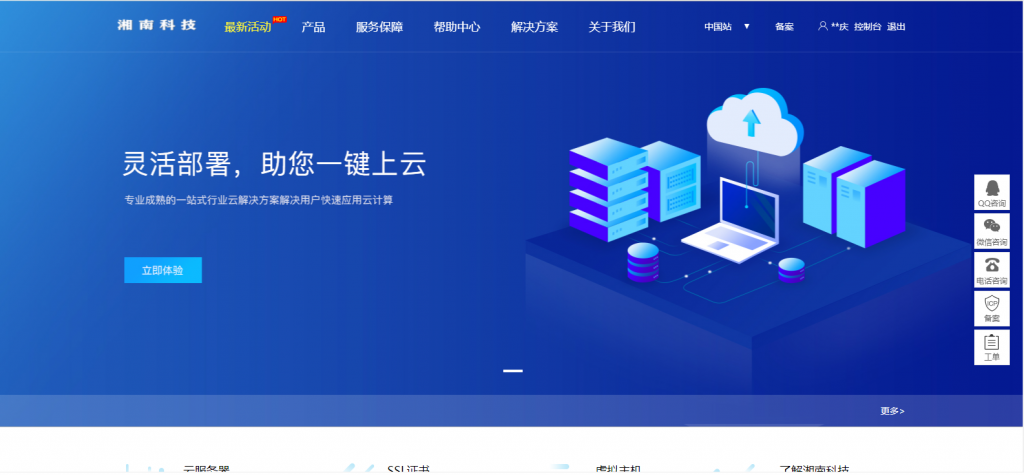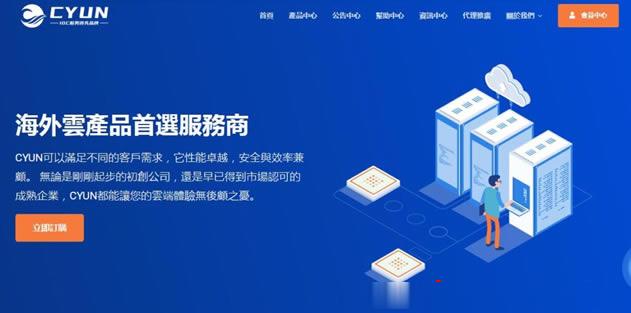改良seasonalwinds
seasonalwinds 时间:2021-01-14 阅读:()
StatueofTsutoNitobeinTaisoJinjainTowadacitywithhissonJujiroNitobe'sintheback.
SourcePhotographedbyYoshiyukiKudo,publishedinTowadashiShisekiBunkazaimap,TowadacityCulturalHeritagePreservationCommittee,June2016Chapter8ArchaicWater:TheRoleofaLegendinConstructingtheWaterManagementHeritageofSanbonkihara,JapanIzumiKuroishiAbstractUntiltheendofthenineteenthcentury,agricultureformedthebasisofculturalidentityinthemanypartsofJapanwherelandandwaterwerelocallymain-tained,managed,andsustained(Wigen1995;Toyama1993).
ThischapterexpandstheJapaneseideaofheritagebeyondthequestionofbeautytoincludeagriculturalsocialsystemsandwatermanagement,exploringthelong-terminteractiverelation-shipbetweenwaterresources,theriverinelandscape,andlocalpeople(Soja2003).
Itdoessobyunravelingtheformationandtransformationofthelegendoftheirrigationpioneers.
TsutoNitobe,asamuraioftheNanbuclan,islegendaryforhispioneeringwaterresourcemanagementandlandreclamationinJapan'sSanbonkihararegioninthenineteenthcentury(MinistryofAgriculture,ForestryandFisheries2018).
Afterhisdeath,hisirrigationprojectwastheprideoftheregion;partoftheleg-endisthatsubsequentirrigationprojectsinheritedthespiritofhiswork(NortheastAgriculturalAdministrationBureau2018).
Thelegendchangedovertime:theMeijigovernmentandpostwargovernmentalofcialsdevelopedthenationinNitobe'sname;andtodayLandImprovementDistricts(LID),orwateruserassociations,andagriculturalbureausexaltNitobeasthespiritualsymbolofagriculturalsocietyanditsculturallandscapes.
However,inon-siteresearch,wediscoveredthatmanyuntoldpeopleputtogethertheseprojects.
Thischaptershowsthatthetangibleheritageoftheirrigationprojectisinseparablefromthearea'shistoricalidentityorintangibleheritage.
KeywordsInaoiRiver·Irrigation·Landreclamation·Legend·Tangibleheritage·JapanesemodernizationI.
Kuroishi(B)AoyamaGakuinUniversity,Tokyo,Japane-mail:izumi-k@sccs.
aoyama.
ac.
jpTheAuthor(s)2020C.
Hein(ed.
),AdaptiveStrategiesforWaterHeritage,https://doi.
org/10.
1007/978-3-030-00268-8_8153154I.
KuroishiFig.
1ThephotoofInaoiRiverlandscapeatthebeginningofMeijiperiodshowingNitobe'shugescaleinoldagriculturallandscape.
SourceHistoryofLandImprovementProjectofInaoiRiver,2010;releasedunderaCreativeCommonsAttribution-NonCommercial-NoDerivatives4.
0InternationalLicenseIntroductionLegendscirculatingthroughoutAsiadescribewaterassacredandhighlightitsimpor-tanceinsustaininglife.
Althoughthischapterwillnotexaminemythologicalunder-standingsofwaterinJapan,weholdthatitisnonethelessimportanttorecognizethecloserelationshipbetweenmythology,historicallegend,andtangiblewaterheritage(Bruner2003)andexaminehowlegendsandpersonalnarrativesaboutwaterhavebeenkeptaliveandallowedtothriveinthefaceofpoliticalandeconomicrestruc-turing.
Inparticular,weunraveltheformationandtransformationofthelegendofTsutoNitobe.
AsamuraioftheNanbuclan,NitobeislegendaryforhispioneeringwaterresourcemanagementandlandreclamationinSanbonkiharainthenineteenthcentury.
HecreatedtherstintakefromtheOiraseRivertocreateInaoiRiver,whichlaterconnectedtheOiraseValleyandTowadaLaketothePacicOcean.
OiraseVal-leyandSanbonkiharaarenowlistedasJapanesewaterlandscapeheritagestructures.
However,inon-siteresearch,wediscoveredthatthelegendchangedovertime,andinparalleltothechangeinthestoryofNitobethesignicanceofwaterinthisregionalsoshifted,fromanagriculturalresourcetoatreasuredphysicalandsymbolicele-mentinthenationallandscape.
HistorianshaveconsistentlyexcludedotheractorsanddynamicstocreatethesymbolicimagesofNitobe(Fig.
1).
TheHistoryofWaterManagementSystemsandSocietyinJapanBeforediscussingtheroleplayedbyNitobeingreaterdetail,itisnecessarytoconveythehistoryofJapaneseagriculturalwatersystems,toillustratethewaysinwhichthecommunitysystemandlegalsystemsofwatermanagement(particularlythatof8ArchaicWater:TheRoleofaLegendinConstructingtheWater…155agriculturalpaddyeldwater)areintertwinedandformthecommunity'svalues.
ThisworkframesthememoriesandlegendarystoriesoftheancestorNitobe–anintangibleheritage–which,inturn,helpstocreatethecommunalmeaningofculturalidentity,asitisinscribedinthetangibleheritageoflandreclamation(Anderson1983).
Ingeniouspoliticalsystemsintegratedwatermanagementwithinthevillagecom-munitysystemfromtheEdoperioduntilafterWorldWarII(Kimura2010;Komori1996;Yamasaki,ed.
byIshiietal.
1996).
IntheEdoperiod(1603–1867),newlawsandpoliciesshapedtherelationshipbetweenthewaterright,ownershipofland,thevillagecommunitysystem,andtaxation.
TheTokugawagovernmentformedthewatermanagementassociationofvillagesineachregiontoorganizeirrigation–ineffect,toensurethecollectiveoperationandmaintenanceofwaterfacilitiesaswellastoregulatebothwaterrightsanddistributionsystemsineachvillage(Akimoto2004).
Asaresult,bothlandandwaterweremanagedandownedbyallvillageresidentsandagriculturalworksandenvironmentalmanagementbecameaneverydaymatterinvillagegovernance.
Thegovernmentregulatedthewaterrightmuchasithadearlierregulatedriversystems(Ishiietal.
1996).
IntheMeijiperiod,allwaterandlandwithnoclearownershipbelongedtothegovernment:theyweremadepublicresources.
In1896,theMeijigovernmentestablishedtheRiverLawunderwhichthenationalgovernmentdecidedeveryissuepertainingtorivers.
In1898,theMeijiCivilCodeapprovedtheorganizedwaterrightsystemoftheEdoperiodascustomarylawandestablishedaruletoprioritizetheolder,localwaterrightoverthenewernationalone(Okuda2010;Yamasaki1996).
In1909,thegovernmentrevisedregulationsfortheimprovementofthedrainagesystem;andin1923,itstartedtoimprovethemaindrainagenetworkandtoinvestheavilyinlandimprovementprojectstomodernizetheagriculturalwaterrightsystem(Miyazaki2009).
In1949,theLandImprovementLawextendedpre-warwatermanagementsystemsintothepostwaragriculturalreform.
ThelawformedLandImprovementDistrictsorwateruserassociations.
TheLIDsthenmaintainedandorganizedwatersystemsandcoordinatedwatermanagementwithindividuallandowners.
Theyimprovedandman-agedagriculturalwaterfacilitiesthatsupplyanddrainwater;improvedagriculturallandinfrastructure,suchasundergrounddrainage;createdlandmarks,agriculturalland,andgrasslands;constructedfarmroads;repairedirrigationpondsandinstalleddisasterpreventiondevicestoagriculturalland;andmanagedriversthatservedasresourcesforfarmingandconsumption,aswellassurroundinglandscapesthatcon-tainedsewersandroads(Shobayashietal.
2017;MinistryofAgriculture,ForestryandFisheriesProduction2017).
Later,withtheadventofindustrializationofwateruseandcities'growingdemandforwater,thegovernment(in1964)revisedtheRiverLaw,suchthat,whiletheyrespectedthecustomarywaterright,publicinstitu-tionscontrolledthewatersupply.
So,then,governmentsustainedboththeLID'sandcustomarylaw,inordertostabilizetheeconomicandsocialstructureofthenationaswellastocodifythewaterenvironmentduringthisperiodofmodernizationofJapanesesociety(Kide1984).
156I.
KuroishiReviewofExistingStudiesIntangibleheritage,memories,andthehistoryofwaterresourcemanagementareinfactconnectedtothetangibleheritageoftheJapanesewaterlandscape.
Whileagri-culturalscholars,ethnographers,historians,andgeographershaveanalyzedhowthesocialmanagementsystemformedagriculturalsocietyandhaveexaminedhistoricalguresandnarratives,theyhavenotextendedtheirstudiestolandscapeandheritage(Yanagita1997;Nitobe1898).
LandscapeheritagestudyinJapanwasfoundedontheideaofidentifyingbeautifulandcharacteristichistoricallandscapesfortourism(Shiga1995).
Andthesescholarsdidnotmovebeyondtheseboundstocriticallyexaminethetripartiterelationshipbetweenspatiality,sociality,andhistoricity(Wat-suji1979;Higuchi1975).
Toprovidesomecontext,untiltheendofthe1960s,Japaneseregionalandurbanplanningstudiesemphasizedeffectiveplanningtomod-ernizeruralareasfromanengineeringviewpoint(Ishida2004).
Itwasinthe1980sthaturbanstudiesscholarsbegantostudythewaterenvironmentinJapan,joiningarchitecturalscholars(Kawahara2001).
AndalthoughJapanestablishedachapterofICOMOS,theinternationalNGOwhichprotectsheritagein1972,itdidnotbecomeapartyoftheUNESCOWorldHeritageConventionuntil1992,asthenationalgov-ernmentcouldnotpromisetoprotecthistoricalmonumentsandsitesaspublicvaluesuntilthen.
HeritagehistorianslikeEmmaWatersonandLaurajaneSmithhaveaddressedthedifcultyofintegratingsocialhistoryintodiscussionsoftangibleheritage.
Theyarguethatdenitionsofheritageoftencontainidealizedconceptionsofcommunitythatperpetuateconstructionsof"others"whichtheheritageprocesstheninstitu-tionalizes(WatersonandSmith2010).
Forexample,studiesofhistoricalandagri-culturalsociallifehaveoftenconstructednationalistandromanticimagesofruralareas,whichthetourismindustrythenusesinitsadvertisingcampaigns.
Themod-ernizationofruralSanbonkiharaandthestoriesofthatmodernizationhelpusthinkaboutconstructionsofcommunityandheritage,andexploretheinterrelationshipofagriculturalwatersystemswithlocallandscapesandlocalhistories.
GeneralHistoryofSanbonkihara'sReclamationDevelopmentsSanbonkiharawaslongabarrenlandlledwiththevolcanicashandgravelleftbehindbytheeruptionofMt.
HakkodaamillionyearsbeforeandtheformationoftheTowadaLakecaldera.
TheSanbonkiharaplateauisintheeastofthenorthernpartofthemainJapaneseislandofHonshuandincludesmanymunicipalities(TowadaCity,RokunoheTown,ShimodaTown,HyakkokoTown,MisawaCity,TowadaLakeTown,ShichinoheTown,andKamikitaTown).
Theareameasurestwenty-sevenkilometersfromeasttowestandeightkilometersfromnorthtosouth.
Thesubstantialdifferenceinelevation—ofmorethanthirtymeters—betweentheSanbonkiharaplateauand8ArchaicWater:TheRoleofaLegendinConstructingtheWater…157theOiraseRiver,coupledwithpoorwaterretentioncapacityofthesoil,madetheplateaudifculttoirrigateandthusunsuitableforricecultivation.
Sanbonkiharaisfurthermoresusceptibletocoldwindsinthesummer.
Inhabitantsoftensufferfamine.
Farmersontheplateauplantedeldcrops,likemilletandsoybeans,andrearedhorsesasagriculturalactivity.
ThesedifcultconditionshavemadeSanbonkiharaoneofJapan'sthreemajorhistoricalcultivationregionsthathaveovercomenaturaldifcultiestoachieveagriculturalproductivity(theothertwoareKawaminamichoofMiyazakiprefectureandYabukichoofFukushimaprefecture)(Fig.
2).
Fromtheseventeenthcentury,smallscaleprimitivehydrophobicdevelopmentsutilizingnaturalterrainwereconstructedbetweenseveralvillagesinSanbonkiareaandOiraseRiver(Fig.
3).
In1853,TsutoNitobegatheredsixty-vecomradestoinitiatearstmassiveirrigationprojectinSanbonkihara.
TheydugasixthousandmetertunnelthroughtheTengumoriandSakuramountainstotakewaterupfromtheOiraseRiverthroughawaterweir.
Thisnewlycreatedconduit,theInaoiRiver,reachedapproximately10.
3kminlength,boastingthreehundredhectaresofpaddyeldscultivatedinitsbasinin1859.
In1861,Tsuto'ssonJujirotookovertheworktoexpandtheclan'sterritory,havingstudiedvariousindustriesaroundJapanandproposedaplantoextendtheInaoiRivertoOgawaraLakeclosetothePacicOcean.
Followinghisson'stragicdeathin1867,Tsutopersistedinrealizingtheprojectandcompleted1.
1kmofthesecondconduit.
Unfortunately,followingtheMeijirestorationin1868,fundingfornewpaddyirrigation—providedbytheNanbuclan—ceasedandtheprojectwasshelved,relegatingSanbonkiharatoruin(AomoriKenshiHensanKingendaibukai,v62015).
Approximatelyfteenyearslater,intheMeijiperiod,theInaoiRiverirrigationprojectwasrevivedandreceivedrenewedsupportfromthestate.
WiththehelpoftheJapanesegovernmentin1884,ShigeakiFujitaestablishedtheKyoritsuRecla-mationCompany,restoredtheoldconduitsconstructedbytheNitobefamily,andresumedreclamationofSanbonkihara.
In1888,EiichiShibusawa,anindustrialistwhoiswidelyrecognizedasthefatherofJapanesecapitalismandfriendtoNitobe,boughtouttheKyoritsuReclamationCompany,openingtheseventeen-hundredandone-hectareShibusawafarminSanbonkihara(SanbonkiharaKaihatsuKenkyukai1967;Ogasawara1994;Mizuno1961).
TheInaoiRiverhadbeenlengthenedtremen-dously,to39km,reachingthePacicOceanby1897.
In1905,KyoritsuReclamationCompanybecameastock-issuingcompanynamedtheSanbonkiReclamationCor-poration,aneventwhichsignaledamarkedgrowthinthescaleoftheirrigationproject.
TheagriculturalbureaucratandscholarSaburoMizoguchi(1948),reect-ingontheseeventsfromhispost-WorldWarIIperspective,explainedtheselaterMeijiperiodprojectsasthesuccessorstoNitobe'sendeavors(Fig.
4).
In1920,NoriyoshiMizuno,bothanagriculturalengineerandapupilofShibu-sawa,tookofceasthemanageroftheShibusawafarmandworkedtotransferitswatermanagementtothegovernment(Ogasawara1996).
FollowingMizuno'spro-posalstothegovernment,in1937,theTohokuPromotionResearchCouncilselectedtheSanbonkiharadistrictasadevelopmentarea.
Itthensetintomotionalarge-scaleSanbonkiharanationalreclamationprojectthatlastedfrom1938to1944,withsev-eraladministrativebodiesregulatingthemovementofwaterfromLakeTowadato158I.
KuroishiFig.
2MapofSanbonkiharainthenorthernpartofJapanwithTsutoNitobe'sproposaldiagramforfuturedevelopment.
SourceAomoriKenshiHensanKingendaibukai2007,AomoriKenshiShiry-ohenKingendai(AomoriPrefectureHistory,AppendicesModern)1,Aomoriprefecture;releasedunderaCreativeCommonsAttribution-NonCommercial-NoDerivatives4.
0InternationalLicense8ArchaicWater:TheRoleofaLegendinConstructingtheWater…159Fig.
3OldweirutizingnaturalterrainconnectingOiraseRivertoFujisakavillage.
SourcePhototakenbytheauthor2010;releasedunderaCreativeCommonsAttribution-NonCommercial-NoDerivatives4.
0InternationalLicense160I.
KuroishiFig.
4ThepurpleareaindicatesShibusawafarmterritoriesshowinghowtheyextendedNitobe'sirrigationprojecttocoverthewholeareaofInaoiRiverinthe1930s.
SourceShibusawaBunkoarchiveinTowadaCity;releasedunderaCreativeCommonsAttribution-NonCommercial-NoDerivatives4.
0InternationalLicense8ArchaicWater:TheRoleofaLegendinConstructingtheWater…161theOiraseRiver.
Theprojectachievedadualgoal:itsecuredwaterfortheland-scapeofLakeTowadaandtheOiraseValleywhileprovidingwaterforcultivationandhydroelectricpowergenerationinSanbonkihara.
TheprojectconstructedanadditionalSanbonkinationaltrunkconduittouptakewaterfromtheOiraseRiver,allowingthecultivationoflarge-scalepaddyelds.
Theimpactoftheseworkswasdemonstrable:In1944,thewatersuppliedbytheOiraseRiverirrigatedarecord2500haandgeneratedarecord27,000kWofelectricity.
ThesecondperiodofintensegovernmentaldevelopmentinSanbonkiharafol-lowedWorldWarII;indeed,theentireTowadaareawaseventuallyslatedfornationaldevelopment(NortheastAgriculturalAdministrationBureau2016,2017)toaddressapostwarcrisisinhousingandfeedingwarrefugeesandveterans.
Inthiseffort,twothousandveteransandsoldiersweresettledonthe4445haformerSanbonkiharamilitarysiteandmadefarmingandstate-controlledcultivationtheirlivelihood.
In1948,thegovernmentbegantheOgawarapondirrigationnearthePacicOceanasanextensionoftheSanbonkiharaNationalReclamationProject.
Whenthisprojectwascompletedin1966,3376haofpaddyeldsand5947haofcropshadbeendevel-oped,andthewaterwaywasnallyextendedtoseventy-onekilometerstothePacicOcean.
Thismassiveinfrastructurebecamethefoundationoftheregionaleconomy.
Sincethen,themaintenanceandmanagementofrivers,watersupply,anddamshavebeenconductedunderprefecturaladministrationincollaborationwithLIDs(Fig.
5).
ChallengestotheHistoriographyoftheLegendasHeritageinSanbonkiharaWhenweconductedon-siteresearchonwaterheritageandcomparedlocallitera-turetolocalhistory,wediscoveredthatthishistoricalframeworkdidnottellthewholestory.
Itistruethatsomelocalandinstitutionalhistorytextbooks,suchasWatashitachinoFurusatoTowadashi(OurhomelandTowadaCity),publishedbytheeducationalcommitteeofTowadaCity,describedNitobe'sprojectasapioneeringdevelopment.
ButwediscoveredmanystructuresfromasearlyastheEdoperiod,suggestingthatSanbonkiharahadalreadybeendevelopedbeforeNitobestartedhiswork.
Wealsofoundhistoricalrecordsinprivatemuseumsandinthemuseumsofneighboringtownsthatshowedthatmanymigrantstotheareacontributedtolocalwaterreclamationonsmallerscalesovertheyears.
TheTomabechifamilyfromOsakadevelopedSanbonkihara'srstpaddyeldin1673inanearlyreclamationproject(AomoriKenritsuKyodokan1994;AomoriKenshiHensanKingendaibukai2007;InaoiGawaTochiKairyoku2003).
ImmigrantsfromtheUesugiclanintro-ducedfortressconstructiontechnologywhichwasthenusedinirrigationprojectsbymigrantsandlowclasssamurais.
In1845,MoritaKiuemonofShichinohedevelopedmorepaddyeldsinSanbonkihara.
TheFujitafamilyofGonohe,originallyfromShigaPrefecture,alsoplayedapartindevelopingSanbonkihara,aswellasothervillages(Gonohe,Asamizu,Ichikawa,andOsaka).
Emaboardsorwishplaqueswith162I.
KuroishiFig.
5DevelopmentofSanbonkiharareclamationreachingfromTowadaLaketothePacicOcean.
SourceHistoryofLandImprovementProjectofInaoiRiver,2003;releasedunderaCreativeCom-monsAttribution-NonCommercial-NoDerivatives4.
0InternationalLicensepicturesinlocalshrines,tellthetragicandheroicstoriesofthosewhocommittedsui-cidetocalmtherivergod'sangerandtoprotecttheareafromoodsinEdoperiod(Towadashikyoikuiinkai1982;MinistryofLiterature1939;Towadashikyoikukenshusenta1988).
Theabsenceofthesepeoples'worksfromlocalandinstitutionalhistoricaltreat-mentsraisesquestions.
WhydidauthorskeepwritingthatNitobewasthepioneerandstressingthatalllaterdeveloperswerespiritualfollowersandwhywasSan-bonkiharaasymbolandapriorityofnationaldevelopmentuntilafterWorldWarII(KahokuShinpoNewspaper,October20th,2017).
Toanswerthesequestions,wedrawonEricHobsbawm'sideaofhistoriography,whichpositsthatsomehistoricalnarrativessignalthedominantvaluesofthoseinpower;hearguesthatsuchnarrativesshowtherangeofthosewhocanbelongtothenation(Hobsbawm1990).
WefoundthreedynamicsessentialtoourreframingofthelegendofNitobe:rstthatnotonlyNitobebutarangeofactorsdevelopedthereclamationproject;second,thatnationalpoliticalaffairsaffectedpoliciesonwatersupplyandconstructionsofnationalcom-munity;andthirdandlast,thatculturaleventsandurbanplanningbridgedtangibleandintangibleheritage.
8ArchaicWater:TheRoleofaLegendinConstructingtheWater…163BeyondNitobe:OtherActorsandtheCreationandMaintenanceofWaterResourcesAlthoughlegendattributestheSanbonikiharareclamationprojecttoNitobe,infact,arangeofindividualsandassociationsrealizedit.
Theseactorsharboredmultipleagendasthatevolvedovertime,heldsubstantiallydistincteconomicambitions,andworkedatdifferentterritorialscaleswhichvariedaccordingtotime.
Theirriga-tionprojectoftheEdoperiodcreatedpaddyeldsforricecultivation.
IntheMeijiperiod,theShibusawafarmandmilitarycampsintroducednewagriculturaltechnol-ogywhichledtoprotfromforestry,stockfarming,andranching.
Followingthissuccess,inthepre-warperiod,thegovernmentestablishedhydroelectricpowerplantstostabilizewaterintakewithstrongpumpsandtoacceleratetheindustrializationofSanbonkihara.
Finally,inthepostwarperiod,YukioSugimoto,apupilofShibusawa,madehisground-breakingeconomiccontributionsbyestablishingatourismindus-tryinSanbonkihara(Sugimoto1981;Inagaki1998;SasamotoandOgasawara1996;TowadaKankoNewspaper1957–1968).
Initsseveraldifferentincarnations,theSanbonkiharareclamationprojectrequiredarangeofnicheskillsandtechniquesaswellasaverylargeinvestmentofnewtechnology,capitalandlabor.
ManyskilledworkersandengineersfromoutsideTowadawereinvolved.
BeforetheNitobefamily,theUesugiclanandmigrantsfromShigahadbeguntodevelopSanbonkihara.
AfterNitobe,EiichiShibusawaandhisdisciplesMizunoandSugimotocontinuedthereclamationworkandregionalindustrialdevelopment.
Manyoutsiderscameduringpoliticalupheavals.
DuringtheMeijiRestoration,over17,000peopleintheTonamiclanedfromFukushimatoSanbonkiharaaspoliticalrefugees.
HistoricaltextbooksinSanbonkiharadescribehow,undertheordersoftheMeijiGovernment,TsutoNitobetookcareofsomeofthemathisfarmin1871,andhowtheyhaddifcultiesgettingalongwithotherlocalresidentsoftheNanbuclan.
ShigeakiFujitawasadescendantofthisTonamiclanwholaterresumedtheirrigationprojectaftersixteenyears'abandonment.
AfterWorldWarII,manyformermilitarypersonnelanddisplacedJapanesesettledinSanbonkiharatocompletethenationalirrigationproject.
Meanwhile,waterresourcemanagementfrequentlyswitchedhands.
Theirriga-tionprojecttransitionedfrombeingunderalocalclan,toaprivatecompanyandtoagovernmententity.
Initially,itwasundertheNanbuclan,thentheKyoritsuReclamationCompany,andtheSanbonkiharaReclamationCooperation.
AftertheSanbonkiharaReclamationCooperationdissolvedin1921,theInaoiRiverIrriga-tionAssociationtookoverwaterresourcemanagement,andafterthewar,theInaoiRiverLandImprovementOrganizationassumedleadership.
Overtime,localpeoplemanagedandsteeredthesecompanies,sometimesworkingintheirowninterests.
Thesehistoricalanalysesclarifythattheactualprocessofthedevelopingreclama-tion,thecoreofintangibleheritage,hasfrequentlychangeddirection,withmultipleagentsshapingandnegotiatingchangesinthemeaningofwater(Spirn1998).
164I.
KuroishiThePoliticsofNitobe'sLegendintheManagementofWaterandCommunityAnotherwayoftellingthisstoryistopointoutthatneitherthelocalcommunitynorthecommunityworkingonthereclamationprojectwashomogenous.
ButSan-bonkiharaneededasymbolicleaderinordertointegrateoutsidersintoSanbonkiharasociety,tocontroltensionsinsharingwaterandlanduse,andtomanagethedif-cultiesofpoliticalandindustrialmodernizationoverall.
Nitobestoodforasocialethossharedbyarangeofcommunitymembersthatcouldbridgethegovernment,capitalists,immigrants,andlocalindividuals.
ThesepoliticaldynamicsshapethestoryofNitobeasthelegendaryfounderofSanbonkiharainbooksbytheNitobeMemorialarchive,localchildren'stextbooks,ministryreports,andtheLIDs'books;thesenarrativesexcludeothercharactersforthesamepoliticalreasons.
TsutoandJujiroNitobecarriedouttheirprojectsinthetransitionfromtheEdototheMeijiperiods.
Althoughpoliticalredtapehinderedmanyprojects,theNitobeswerehighlyregardedinthenationalgovernment,andtheyplayedapivotalroleinguaranteeingthelegitimacyoftheMeijigovernmentinnorthernJapan.
Ontwooccasionsin1877and1881,EmperorMeijivisitedtheNitobefamily'shouseandhonoredTsutoforhisaccomplishmentsbutforhisowninterests:tosolidifyhisownhistoricalandethnicauthority,toassociatehimselfwithlivinggodsamongthepeople,andtoadvancehisstatusasademigod(Osaka1998).
Atthesametime,thisassociationstrengthenedtheauthorityoftheNitobesandthepowerofthelocaladministrativeagenciesintheregion.
In1884,EmperorMeijinationalizedalarge-scalebudgetfortheSanbonkiharaareatosupporttheKyoritsuReclamationCompanyinNitobe'sname.
WhentheEmperorascendedtothethronein1867,hisgovernmenthadformulatedpoliciestoresolveconictswiththeclanshedefeated,includingstate-supportedagriculturallanddevelopmentprojects(Osaka,Ibid.
)Sanbonkiharawasthecornerstoneofthisoverallprojectinthe1880stomakeindustrythenewfoundationofthenation:otherbigprojectsincludedTazawaLakeinAkitaandAsakaHydrophobicinFukushima(Miyamotoetal.
2002;NortheastAgriculturalAdministrationBureau2018).
Later,from1937,aswarbroughtaninuxofexternallaborersforstateagriculturalcultiva-tion,thelegendofNitobehelpedagaintoinculcatearegionalethicsandcultivateastatethatdiminisheddiscriminationtowardimmigrants.
Thus,asintangibleheritage,morethanjustalocalhistoricalstory,Nitobe'slegendhadalastingandfar-reachingimpactontheidentityofSanbonkihara.
CulturalEventsandUrbanPlanningBridgingTangibleandIntangibleHeritageFestivals,statues,andeducationalactivitiesalsoallcelebratedNitobe'sworksaslegendary.
Theseculturaleventsbridgedintangiblelegendandtangiblestructures.
8ArchaicWater:TheRoleofaLegendinConstructingtheWater…165InTowadacity,Taiso(Archaic)festivalisheldannually(from3rdto5thMay)inTaisoShrineduringtheseasonofcherryblossoms,commemoratingwhatisknownasWaterFlowingDay.
PeopleplacebronzestatuesandothermemorialstotheNitobefamilyinthegardenofNitobearchive,tangibleheritageforthearea.
ElementaryschoolsbringchildrentotheShrinetoteachthemthelegend.
TheauraoflegendofaroundtheaccomplishmentsofTsutoNitobeextendstotheurbanplanningofhisson,JujiroNitobe.
LocalhistoricaltextbookscelebrateJujiro'sapplicationofKyoto'surbanplanningmethodtoTowadain1860asuniqueatthetime,particularlyhisuseofthegridsystemofroadsdividingthetownintoblocksof1.
3*1.
3km;theyclaimitasthebeginningofmodernJapaneseurbanplanning(TaisoKenshokai1998).
TheynotethatJujiroestablishedtheInariShrine,ClearMoonTemple,andRinenTempleoutofconcernforthepeople'spsychologicalandspiritualwell-being.
HedesignedacanaltobringwaterfromtheInaoiRivernotonlyforagriculturalpurposesbutalsofordomesticuseandreprotectionintownanddesignedthecityaroundacanal.
HeplannedanewcommercialdistrictinthenewtownofInaoi-machialongtheOshuKaidoRoad,withtwo-storyshopslininganarcade,anddemarcatednewdistrictsfordifferentindustries(dishware,silk,leather)andevenahorsemarket.
Atseverallocations,forestsweretobeplantedtoshieldagainststrongseasonalwinds.
However,TowadaCityneveractuallybuiltthewatercanalfromInaoiRiverinitscenter,anditisunclearhowJujiro'sideascouldhavecontributedtothecity'slaterurbanplanning.
In1885,wellafterJujirohaddiedin1867,theArmyBattalionBureauopenedanewtrainingcenterandexpandedJujiro'soriginalgridsystemtoformthecurrentcityareaofabout4km2,sandwichedbyInaoiRiverandOiraseRiver.
Intheupdatedgrid,TaisoShrine(1965,muchlaterthantheplanningdescribedhere)isclearlyseparatedfromthesurroundingtownbyatoriigatewithadesignatedapproachonastrongspatialaxis,whichsuggestsitsintentionalalienationevenfromtheArmy'srevisionofJujiro'soriginalidea.
Despitethelegend,then,TowadaCitywasnotdevelopedaccordingtoJujiro'splanning.
ItwaslargelyinuencedbythepreandpostWWIIplanning,whichfollowedtheplanningofSapporocity(Towadashikyoikukenshusenta1981)(Fig.
6).
TransformationoftheTerritoryandValuesofHeritageThegapsbetweenlegendofJujiroNitobeandtheactuallandscapeofTowadacityalsoechotheshiftsinthehistoricalrelationshipbetweenthelegendoftheelderNitobeandthelandscape.
TheclearestevidenceofthisshiftisthattheareanamedSanbonkiharaitselfchangedthroughhistory.
AftertheformationofAomoriandIwateprefecturein1871,thecityterritorychangedfromSanbonki-chotoSanbonkicityandnallyTowadacity,withvariouscitymergersextendingNitobe'slegendarystatusgeographically.
What"Sanbonkihara"meansinthelegendhasalsoexpandedfromtheactualprojectsite:addingTonamiclan'snewsettlementafter1869inthenearbyNinoheandSannohearea,Shibusawafarm'swideranchareaalongInaoi166I.
KuroishiFig.
6WholeareamapofTowadacitydowntownareashowingpostWWIIgridroadsextentionsintheformerArmyBattalionarea.
SourceTowadashikyoikukenshusenta;releasedunderaCreativeCommonsAttribution-NonCommercial-NoDerivatives4.
0InternationalLicense8ArchaicWater:TheRoleofaLegendinConstructingtheWater…167River,thenationalirrigationprojectsconnectedtoTowadaandOgawaralakes,andSugimoto'stourismfromTowadatotheMisawaarea(AomoriKenshiHensanKin-gendaibukai2007).
Ineachstage,theimageofthelandscapeofSanbonkiharainNitobe'slegendissignicantlydifferent;paddyeld,rancheld,broaderfarminglandreachingtothePacicOcean,andnaturalvalleywithdeepwoodsandTowadalake(Fig.
7).
Anothersignicantshiftisapparentintheaestheticvalueofwaterineachstageofthestory.
TheearlytextsofthelegendofNitobedidnotmentionthebeautyofthelandscape.
Then,intheEdoperiod,JapancelebratedthebeautyofthewestsideofTowadaLake(inAkitaprefecture)asakindofheritage,and1930sstateprojectsand1950sworksbySugimotorecognizedthebeautyandculturalvaluesofthelengthandlandscapeoftheriversfromTowadaLaketoSanbonkihara(Okuboetal.
1993).
InbuildingtheTowadaScienceMuseumin1953,OgawaraLakeEthnicMuseumin1958,andSaigyodoparkin1980,Sugimotocombinedlocalfolklorewiththelandscape,bringingtogetherintangibleandtangibleheritage.
ClaimingNitobeandShibusawaashisspiritualpredecessors,SugimotorodethewavesofcapitalistsuccessandbegananationwidetourismprojectbetweentheOiraseRiverandTokyoin1967(Nakazono2012).
ConclusionThischapterreframestherelationshipbetweenwaterandpeopleintheSanbonkihararegionandthecontributionofNitobe'slegendtolocalsocietytoincludetheeffectsoftheever-evolvinginteractionsbetweenpeople,space,andsocietyinandafterNitobe'stime.
ThevalueofwaterandthelandscapewasnotasimpleoutcomeofNitobe'sprojectbutdevelopedinthehistoricalprocessofagriculturalexpansion,riverconservation,andredevelopment,andinthehistoricalprocessofspatializingandformalizingthelegend.
Political,economic,andsocialrestructuringkeptcreatinganewsenseofcommunityandnewinterrelationshipsbetweentangibleandintangibleheritage(Tuan1993).
ThoughthelegendofNitobefadedwithtime,itsspiritremainsinthenaturalandeverydayspacesofSanbonkihara,continuingtoevolvewiththepeoplewhovisitorlivethere(KahokuShinpoNewspaper2017).
InthisperiodofdecliningagricultureandtraditionalsocialethosinJapan,itisnecessarytore-establishwaternotmerelyasanaturalresourceorasanassetofagriculturallandownersbutasthewholecommunity'shistorical,culturalandsocialinheritance;heritage,withwhichdiversepeoplehavetoactivelyengageandcultivatefortheirandfuturegenerations'survival.
168I.
KuroishiFig.
7ExpansionsofSugimoto'stourismindustryfromSanbonkiharatoTokyo.
Sourcenews-paperTowadaKanko,publishedin1966;releasedunderaCreativeCommonsAttribution-NonCommercial-NoDerivatives4.
0InternationalLicense8ArchaicWater:TheRoleofaLegendinConstructingtheWater…169AcknowledgementsThisstudywasmadepossiblebythematerialandsupportofTowadacity,ShibusawaBunko,AomoriPrefectureofce,InaoiTochiKairyoku,TowadaKanko,andNitobeKinenkan.
TheoriginalresearchstartedwithfundingfromtheToyotaFoundationandlaterdevel-opedthroughsupportfromtheMinistryofLiterature.
TheprojectevolvedtoitscurrentthemethankstotheadvicesbyProfessorMasamitsuOgiwaraandMr.
MamoruOkubo,andtotheconferenceonWaterandHeritagefortheFutureorganizedbyICOMOS,theCenterforGlobalHeritageandDevelopment(CGHD),andDelftUniversityofTechnology.
IappreciatethesupportofProfessorCarolaHeinforinvitingmetotheconferenceandhelpingeditmytext.
ReferencesAndersonB(1983)Imaginedcommunities:reectionsontheoriginandspreadofnationalism.
Verso,LondonAomoriKenritsuKyodokan(1994)InaoigawatoDobuchiseki.
Aomori,AomorikenAomoriKenshiHensanKingendaibukai(2007)AomoriKenshiKingendaiShiryohen(AomoriPrefectureHistory,Modern,Appendices)1,AomoriPrefectureAomoriKenshiHensanKingendaibukai(2015)Aomorikenshishiryohen,Kinsei(AomoriPrefec-tureHistory,Modern,Appendices)6,AomoriPrefectureBrunerJS(2003)Makingstories:law,literature,life.
HarvardUniversityPress,CambridgeKomoriH(1996)Nogyosuiritonihongatashakai(agriculturalwatersystemandJapanesesociety).
In:ShokeiRonso,no45,pp1–19HiguchiT(1975)KeikannoKozo:LandscapetoshitenoNihonnoKukan(Structureoflandscape:Japanesespaceaslandscape).
GihodoShuppan,TokyoHobsbawmE(1990)Nationsandnationalismsince1780:programme,myth,reality.
CambridgeUniversityPress,CambridgeInagakiM(1998)SugimotoYukioMonogatari.
RyokoYomiuriShuppann,TokyoInaoiGawaTochiKairyoku(2003)InaoiGawaTochikairyokushi(HistoryofInaoiRiverLIDS).
InaoiGawaTochiKairyoku,SanbonkiharaIshidaY(2004)NihonKingendaiToshikeikakunotenkai(Transformationofthemodernandcon-temporaryJapaneseUrbanPlanning)1868–2003.
JichitaiKenkyusha,TokyoIshiiM,NagaokaA,HaradaT(1996)KokudoRiyonohenyotochiikishakai(TransformationoftheuseofNationalLandandlocalsociety).
DaimyodoHakko,TokyoAkimotoH(2004)WagakuniKindainiokeruNogyosuirichitsujonoSaikento(ReexaminationoftheagriculturalwaterrightorderinthemodernizationofJapan).
KeizaiRonshu29(2):1–11KahokuShinpoNewspaper(2017)Oct.
20th,KahokuShinpo,SendaiKahokuShinpoNewspaper(2017)NitobememorialarchivewasorderedtocloseitsbuildingforseismicproblembyTowadacityandisappealingtoacourt.
http://www.
kahoku.
co.
jp/tohokunews/201710/20171021_21036.
html.
Accessed2Jan2018KawaharaI(2001)ChikyuKankyotoTokyo(GlobalenvironmentandTokyo).
Chikumashobo,TokyoKideI(ed)(1984)SuirinoShakaikozo(Socialstructureofwatermanagement).
Kokusairengodaigakupress,TokyoKimuraS(2010)NihonNogyoshi.
YoshikawaKobundo,Tokyo,pp256–320MinistryofAgriculture,ForestryandFisheriesproduction(2017)Tochikairyoku,TochikairyoJigyodantairengokainitsuite(LIDsandassociationofLIDs).
le:///Users/Izumi/Desktop/農林水産省:土地改良区土地改良事業団体連合会について.
html.
Accessed10Dec2017170I.
KuroishiMinistryofAgriculture,ForestryandFisheries.
SanbonkiharaDaichiwoKaitakushitaNitobeTsuto.
http://www.
maff.
go.
jp/j/nousin/sekkei/museum/m_izin/aomori/.
Accessed2Jan2018MinistryofLiterature(1939)TohokuDokuhon(ReadingabouttheNorthernpartofJapan),Gekan,Towadacity,1–3,42–45MiyazakiJ(2009)Kankosuirikennoruikeitosonokoryoku(typologyofcustomarywaterrightlawanditseffectivity).
Mizushigen,kankyokenkyu22:1–12MiyamotoTetal(2002)AomorikenniokeruShizokujusantotsugaruaisangyokahenokokoromi(TheIndustrializationandeducationofSamuraiclassandthecreationofdyingindustryinAomori).
In:ReviewoftheresearchesineducationaldepartmentofHirosakiUniversity,vol87,pp89–98MizoguchiS(1948)Uton,SuiriShidan(Rainyvillage,historyofwatermanagement).
Yukeisha,TokyoMizunoN(1961)Taishiwotsuide.
SanbonkiharaKaihatsuKenkyukai,TowadacityNakazonoH(2012)Totestugahashittajidai.
In:Toounippou,2.
14-25NitobeI(1898)NogyoHonron(Principlesofagriculture).
Mokabo,TokyoNortheastAgriculturalAdministrationBureau.
Aomoriken,Towadakoshuhen,SanbonkiharaDaichimonogatari(Aomoriprefecture,AreaofTowadalake,SanbonkiharaPlateaustory).
http://www.
maff.
go.
jp/tohoku/nouson/seibi/rekisi/6story01.
html.
Accessed2Jan2018NortheastAgriculturalAdministrationBureau(2016)KokueiKangaiHaisuiJigyo:Ousakagawasaganchiku(NationalIrrigationandwast-waterproject:OusakariverleftbankareaNortheastAgriculturalAdministrationBureau(2017)SuidonoIshizue(Foundationofwaterandearth).
le:///Users/Izumi/Desktop/陸奥の先進地%20—福島県%20国営会津北部農業水利事業%20—水土の礎.
html.
Accessed20August2017NortheastAgriculturalAdministrationBureau(2018)Thehistoriesofthesethreeprojects.
http://www.
maff.
go.
jp/tohoku/nouson/seibi/rekisi/6story01.
html.
Accessed2Jan2018OgasawaraK(1996)Shibusawanoujotosanbonkiharanoyoake.
Seikoenshuppann,TowadacityOgasawaraY(1994)ShibusawaNojonoKaihatsutoKeiei,TowadacityOkudaS(2010)NogyoSuirichitsujotoSuirikennoarikata(Orderofwaterdistributionandthewayofwaterrightcontrol).
In:AoyamaHomuKenkyuronshu(AoyamaLegalresearchcollection),AoyamaGakuinpublication,no3,vol1,pp107–131OkuboHetal.
(1993)Towadako,OirasegawanoFuchihozenntokaihatsutonochosei(StudyonthePlanningMethodsforCoordinationbetweenthekeepingscenicbeautyplaceandthedevelopmentofwaterresourcesinTowadaLakeandOiraseRiverBasin).
In:Nodoshi,no61,vol10,pp927–932OsakaH(1998)DaijokankiChihoJunkonoKisotekikenkyu(BasicexaminationoftheruraltourbyMeijiEmperorinhisearlyrulingperiod).
In:HoseiShigaku.
Tokyo,HoseiShigakkai,no50.
March,pp62–72SanbonkiharaKaihatsuKenkyukai(1967)KaitakunoOni,TowadacitySasamotoK,OgasawaraK(1996)Chosen,Tokyo,JitsugyonoNihonsha.
TowadaKankoNews-paper,Towadashi,1957–1968ShigaS(1995)NihonFukeiron.
IwanamiBunko,IwanamiShoten,TokyoShobayashiM,OkajimaM(2017)Kikansuirisisetunojizokutekinakoshinnotamenoaratanasei-dotekiwakugumi(NewLegalframeworktosustainablerenewalofthemainirrigationfacility).
In:NogyoNosonKogakkaishi(Agricultureandagriculturalareaengineeringacademyresearchreview),vol85,no9,pp21–27SojaE(2003)Writingthecityspatially.
In:City:analysisofurbantrends,culture,theory,policy,action,vol7,no3,Routledge,London,pp269–281(13),November2003SpirnAW(1998)Theliteratureoflandscapeandsurvivalandimagination:readingandtellingthemeaningoflandscape.
In:Thelanguageoflandscape.
YaleUniversityPress,NewHaven,pp27–46,47–818ArchaicWater:TheRoleofaLegendinConstructingtheWater…171SugimotoY(1981)ShibusawaKeizosenseinitsukaeteTaisoKenshokai(1998)Towadashi,SanbonkiharaKaitakutoNitobesandainoRekishigaidobukku(GuidebookabouthistoryofthedevelopmentofSanbonkiharainTowadacityandthethreegenerationofNitobe).
NitobeKinenkan,TowadacityTowadashikyoikukenshusenta(1981)ChugakkoshakaikafukudokuhonWagakyodoTowadashi,78,AomoriTowadashikyoikuiinkai(1982)WatashitachinoFurusatoTowadashi(OurhomelandTowadacity),TowadacityTowadashikyoikukenshusenta(1988)Kyoudogakushuushiryou,zokuzokumedemirutowadashinodaichi(MaterialfortheprogramoflearninghomelandandadditionalmaterialofvisualsurveyoftheareaofTowadacity).
In:Sanbonkiharawohiraku(ReclaimSanbonkiharaplateau),TowadacityTowadaKankoNewspaper(1957)8.
1-1968,10.
15,TowadaKankoDentetsuToyamaK(1993)NihonnoKome:KankotoBunkawakakutsukurareta(JapaneseRice:thisisthewayhowtourismandculturehavebeendeveloped).
Tokyo,ChukoShinsho,pp28,122,154–159TuanY-F(1993)Spaceandplace,ChikumaGakugeiBunko,tr.
hiroshiyamagata,pp265–282WatersonE,SmithL(2010)Therecognitionandmisrecognitionofcommunityheritage.
IntJHeritageStud16:4–15WatsujiT(1979)Fudo:Ningengakutekikosatsu(Climate:Examinationashumanisticstudy).
IwanamiBunko(Originallyitwaspublishedin1938),TokyoWigenK(1995)ThemakingofaJapaneseperiphery,1750–1920.
UniversityofCaliforniaPress,pp1–21,70–79YamasakiK(1996)Kantochihonomizushigennohippakutosonohaikei(StudyofthecriticalshortageofthewaterresourceinKantoregionanditsbackground).
In:IshiiM,NagaokaA,HaradaT(eds)Kokudoriyounohenyotochiikishakai(TransformationoftheUseofNationalLandandLocalSociety),26.
DaimyodoHakko,TokyoYanagitaK(1997)JidaitoNosei(ContemporarySocietyandAgriculturalpolicies),vol2,AnthologyofYanagita'sWorks,Tokyo,Chikumashobo(originallypublishedin1911)IzumiKuroishiisprofessoroftheSchoolofCulturalandCreativeStudiesofAoyamaGakuinUniversity,Japan.
HerrecentpublicationsincludeConstructingtheColonizedLand(Ashgate2014)and"UrbanSurveyandPlanninginTwentieth-CenturyJapan"(JUH,2016).
Shecurrentlyworksondisasterrelocationandsocialresilienceafterthe2011tsunamiandondomesticspaceandhouseplanninginwartimeJapan.
OpenAccessThischapterislicensedunderthetermsoftheCreativeCommonsAttribution-NonCommercial-NoDerivatives4.
0InternationalLicense(http://creativecommons.
org/licenses/by-nc-nd/4.
0/),whichpermitsanynoncommercialuse,sharing,distributionandreproductioninanymediumorformat,aslongasyougiveappropriatecredittotheoriginalauthor(s)andthesource,providealinktotheCreativeCommonslicenseandindicateifyoumodiedthelicensedmaterial.
Youdonothavepermissionunderthislicensetoshareadaptedmaterialderivedfromthischapterorpartsofit.
Theimagesorotherthirdpartymaterialinthischapterareincludedinthechapter'sCreativeCommonslicense,unlessindicatedotherwiseinacreditlinetothematerial.
Ifmaterialisnotincludedinthechapter'sCreativeCommonslicenseandyourintendeduseisnotpermittedbystatutoryregulationorexceedsthepermitteduse,youwillneedtoobtainpermissiondirectlyfromthecopyrightholder.
SourcePhotographedbyYoshiyukiKudo,publishedinTowadashiShisekiBunkazaimap,TowadacityCulturalHeritagePreservationCommittee,June2016Chapter8ArchaicWater:TheRoleofaLegendinConstructingtheWaterManagementHeritageofSanbonkihara,JapanIzumiKuroishiAbstractUntiltheendofthenineteenthcentury,agricultureformedthebasisofculturalidentityinthemanypartsofJapanwherelandandwaterwerelocallymain-tained,managed,andsustained(Wigen1995;Toyama1993).
ThischapterexpandstheJapaneseideaofheritagebeyondthequestionofbeautytoincludeagriculturalsocialsystemsandwatermanagement,exploringthelong-terminteractiverelation-shipbetweenwaterresources,theriverinelandscape,andlocalpeople(Soja2003).
Itdoessobyunravelingtheformationandtransformationofthelegendoftheirrigationpioneers.
TsutoNitobe,asamuraioftheNanbuclan,islegendaryforhispioneeringwaterresourcemanagementandlandreclamationinJapan'sSanbonkihararegioninthenineteenthcentury(MinistryofAgriculture,ForestryandFisheries2018).
Afterhisdeath,hisirrigationprojectwastheprideoftheregion;partoftheleg-endisthatsubsequentirrigationprojectsinheritedthespiritofhiswork(NortheastAgriculturalAdministrationBureau2018).
Thelegendchangedovertime:theMeijigovernmentandpostwargovernmentalofcialsdevelopedthenationinNitobe'sname;andtodayLandImprovementDistricts(LID),orwateruserassociations,andagriculturalbureausexaltNitobeasthespiritualsymbolofagriculturalsocietyanditsculturallandscapes.
However,inon-siteresearch,wediscoveredthatmanyuntoldpeopleputtogethertheseprojects.
Thischaptershowsthatthetangibleheritageoftheirrigationprojectisinseparablefromthearea'shistoricalidentityorintangibleheritage.
KeywordsInaoiRiver·Irrigation·Landreclamation·Legend·Tangibleheritage·JapanesemodernizationI.
Kuroishi(B)AoyamaGakuinUniversity,Tokyo,Japane-mail:izumi-k@sccs.
aoyama.
ac.
jpTheAuthor(s)2020C.
Hein(ed.
),AdaptiveStrategiesforWaterHeritage,https://doi.
org/10.
1007/978-3-030-00268-8_8153154I.
KuroishiFig.
1ThephotoofInaoiRiverlandscapeatthebeginningofMeijiperiodshowingNitobe'shugescaleinoldagriculturallandscape.
SourceHistoryofLandImprovementProjectofInaoiRiver,2010;releasedunderaCreativeCommonsAttribution-NonCommercial-NoDerivatives4.
0InternationalLicenseIntroductionLegendscirculatingthroughoutAsiadescribewaterassacredandhighlightitsimpor-tanceinsustaininglife.
Althoughthischapterwillnotexaminemythologicalunder-standingsofwaterinJapan,weholdthatitisnonethelessimportanttorecognizethecloserelationshipbetweenmythology,historicallegend,andtangiblewaterheritage(Bruner2003)andexaminehowlegendsandpersonalnarrativesaboutwaterhavebeenkeptaliveandallowedtothriveinthefaceofpoliticalandeconomicrestruc-turing.
Inparticular,weunraveltheformationandtransformationofthelegendofTsutoNitobe.
AsamuraioftheNanbuclan,NitobeislegendaryforhispioneeringwaterresourcemanagementandlandreclamationinSanbonkiharainthenineteenthcentury.
HecreatedtherstintakefromtheOiraseRivertocreateInaoiRiver,whichlaterconnectedtheOiraseValleyandTowadaLaketothePacicOcean.
OiraseVal-leyandSanbonkiharaarenowlistedasJapanesewaterlandscapeheritagestructures.
However,inon-siteresearch,wediscoveredthatthelegendchangedovertime,andinparalleltothechangeinthestoryofNitobethesignicanceofwaterinthisregionalsoshifted,fromanagriculturalresourcetoatreasuredphysicalandsymbolicele-mentinthenationallandscape.
HistorianshaveconsistentlyexcludedotheractorsanddynamicstocreatethesymbolicimagesofNitobe(Fig.
1).
TheHistoryofWaterManagementSystemsandSocietyinJapanBeforediscussingtheroleplayedbyNitobeingreaterdetail,itisnecessarytoconveythehistoryofJapaneseagriculturalwatersystems,toillustratethewaysinwhichthecommunitysystemandlegalsystemsofwatermanagement(particularlythatof8ArchaicWater:TheRoleofaLegendinConstructingtheWater…155agriculturalpaddyeldwater)areintertwinedandformthecommunity'svalues.
ThisworkframesthememoriesandlegendarystoriesoftheancestorNitobe–anintangibleheritage–which,inturn,helpstocreatethecommunalmeaningofculturalidentity,asitisinscribedinthetangibleheritageoflandreclamation(Anderson1983).
Ingeniouspoliticalsystemsintegratedwatermanagementwithinthevillagecom-munitysystemfromtheEdoperioduntilafterWorldWarII(Kimura2010;Komori1996;Yamasaki,ed.
byIshiietal.
1996).
IntheEdoperiod(1603–1867),newlawsandpoliciesshapedtherelationshipbetweenthewaterright,ownershipofland,thevillagecommunitysystem,andtaxation.
TheTokugawagovernmentformedthewatermanagementassociationofvillagesineachregiontoorganizeirrigation–ineffect,toensurethecollectiveoperationandmaintenanceofwaterfacilitiesaswellastoregulatebothwaterrightsanddistributionsystemsineachvillage(Akimoto2004).
Asaresult,bothlandandwaterweremanagedandownedbyallvillageresidentsandagriculturalworksandenvironmentalmanagementbecameaneverydaymatterinvillagegovernance.
Thegovernmentregulatedthewaterrightmuchasithadearlierregulatedriversystems(Ishiietal.
1996).
IntheMeijiperiod,allwaterandlandwithnoclearownershipbelongedtothegovernment:theyweremadepublicresources.
In1896,theMeijigovernmentestablishedtheRiverLawunderwhichthenationalgovernmentdecidedeveryissuepertainingtorivers.
In1898,theMeijiCivilCodeapprovedtheorganizedwaterrightsystemoftheEdoperiodascustomarylawandestablishedaruletoprioritizetheolder,localwaterrightoverthenewernationalone(Okuda2010;Yamasaki1996).
In1909,thegovernmentrevisedregulationsfortheimprovementofthedrainagesystem;andin1923,itstartedtoimprovethemaindrainagenetworkandtoinvestheavilyinlandimprovementprojectstomodernizetheagriculturalwaterrightsystem(Miyazaki2009).
In1949,theLandImprovementLawextendedpre-warwatermanagementsystemsintothepostwaragriculturalreform.
ThelawformedLandImprovementDistrictsorwateruserassociations.
TheLIDsthenmaintainedandorganizedwatersystemsandcoordinatedwatermanagementwithindividuallandowners.
Theyimprovedandman-agedagriculturalwaterfacilitiesthatsupplyanddrainwater;improvedagriculturallandinfrastructure,suchasundergrounddrainage;createdlandmarks,agriculturalland,andgrasslands;constructedfarmroads;repairedirrigationpondsandinstalleddisasterpreventiondevicestoagriculturalland;andmanagedriversthatservedasresourcesforfarmingandconsumption,aswellassurroundinglandscapesthatcon-tainedsewersandroads(Shobayashietal.
2017;MinistryofAgriculture,ForestryandFisheriesProduction2017).
Later,withtheadventofindustrializationofwateruseandcities'growingdemandforwater,thegovernment(in1964)revisedtheRiverLaw,suchthat,whiletheyrespectedthecustomarywaterright,publicinstitu-tionscontrolledthewatersupply.
So,then,governmentsustainedboththeLID'sandcustomarylaw,inordertostabilizetheeconomicandsocialstructureofthenationaswellastocodifythewaterenvironmentduringthisperiodofmodernizationofJapanesesociety(Kide1984).
156I.
KuroishiReviewofExistingStudiesIntangibleheritage,memories,andthehistoryofwaterresourcemanagementareinfactconnectedtothetangibleheritageoftheJapanesewaterlandscape.
Whileagri-culturalscholars,ethnographers,historians,andgeographershaveanalyzedhowthesocialmanagementsystemformedagriculturalsocietyandhaveexaminedhistoricalguresandnarratives,theyhavenotextendedtheirstudiestolandscapeandheritage(Yanagita1997;Nitobe1898).
LandscapeheritagestudyinJapanwasfoundedontheideaofidentifyingbeautifulandcharacteristichistoricallandscapesfortourism(Shiga1995).
Andthesescholarsdidnotmovebeyondtheseboundstocriticallyexaminethetripartiterelationshipbetweenspatiality,sociality,andhistoricity(Wat-suji1979;Higuchi1975).
Toprovidesomecontext,untiltheendofthe1960s,Japaneseregionalandurbanplanningstudiesemphasizedeffectiveplanningtomod-ernizeruralareasfromanengineeringviewpoint(Ishida2004).
Itwasinthe1980sthaturbanstudiesscholarsbegantostudythewaterenvironmentinJapan,joiningarchitecturalscholars(Kawahara2001).
AndalthoughJapanestablishedachapterofICOMOS,theinternationalNGOwhichprotectsheritagein1972,itdidnotbecomeapartyoftheUNESCOWorldHeritageConventionuntil1992,asthenationalgov-ernmentcouldnotpromisetoprotecthistoricalmonumentsandsitesaspublicvaluesuntilthen.
HeritagehistorianslikeEmmaWatersonandLaurajaneSmithhaveaddressedthedifcultyofintegratingsocialhistoryintodiscussionsoftangibleheritage.
Theyarguethatdenitionsofheritageoftencontainidealizedconceptionsofcommunitythatperpetuateconstructionsof"others"whichtheheritageprocesstheninstitu-tionalizes(WatersonandSmith2010).
Forexample,studiesofhistoricalandagri-culturalsociallifehaveoftenconstructednationalistandromanticimagesofruralareas,whichthetourismindustrythenusesinitsadvertisingcampaigns.
Themod-ernizationofruralSanbonkiharaandthestoriesofthatmodernizationhelpusthinkaboutconstructionsofcommunityandheritage,andexploretheinterrelationshipofagriculturalwatersystemswithlocallandscapesandlocalhistories.
GeneralHistoryofSanbonkihara'sReclamationDevelopmentsSanbonkiharawaslongabarrenlandlledwiththevolcanicashandgravelleftbehindbytheeruptionofMt.
HakkodaamillionyearsbeforeandtheformationoftheTowadaLakecaldera.
TheSanbonkiharaplateauisintheeastofthenorthernpartofthemainJapaneseislandofHonshuandincludesmanymunicipalities(TowadaCity,RokunoheTown,ShimodaTown,HyakkokoTown,MisawaCity,TowadaLakeTown,ShichinoheTown,andKamikitaTown).
Theareameasurestwenty-sevenkilometersfromeasttowestandeightkilometersfromnorthtosouth.
Thesubstantialdifferenceinelevation—ofmorethanthirtymeters—betweentheSanbonkiharaplateauand8ArchaicWater:TheRoleofaLegendinConstructingtheWater…157theOiraseRiver,coupledwithpoorwaterretentioncapacityofthesoil,madetheplateaudifculttoirrigateandthusunsuitableforricecultivation.
Sanbonkiharaisfurthermoresusceptibletocoldwindsinthesummer.
Inhabitantsoftensufferfamine.
Farmersontheplateauplantedeldcrops,likemilletandsoybeans,andrearedhorsesasagriculturalactivity.
ThesedifcultconditionshavemadeSanbonkiharaoneofJapan'sthreemajorhistoricalcultivationregionsthathaveovercomenaturaldifcultiestoachieveagriculturalproductivity(theothertwoareKawaminamichoofMiyazakiprefectureandYabukichoofFukushimaprefecture)(Fig.
2).
Fromtheseventeenthcentury,smallscaleprimitivehydrophobicdevelopmentsutilizingnaturalterrainwereconstructedbetweenseveralvillagesinSanbonkiareaandOiraseRiver(Fig.
3).
In1853,TsutoNitobegatheredsixty-vecomradestoinitiatearstmassiveirrigationprojectinSanbonkihara.
TheydugasixthousandmetertunnelthroughtheTengumoriandSakuramountainstotakewaterupfromtheOiraseRiverthroughawaterweir.
Thisnewlycreatedconduit,theInaoiRiver,reachedapproximately10.
3kminlength,boastingthreehundredhectaresofpaddyeldscultivatedinitsbasinin1859.
In1861,Tsuto'ssonJujirotookovertheworktoexpandtheclan'sterritory,havingstudiedvariousindustriesaroundJapanandproposedaplantoextendtheInaoiRivertoOgawaraLakeclosetothePacicOcean.
Followinghisson'stragicdeathin1867,Tsutopersistedinrealizingtheprojectandcompleted1.
1kmofthesecondconduit.
Unfortunately,followingtheMeijirestorationin1868,fundingfornewpaddyirrigation—providedbytheNanbuclan—ceasedandtheprojectwasshelved,relegatingSanbonkiharatoruin(AomoriKenshiHensanKingendaibukai,v62015).
Approximatelyfteenyearslater,intheMeijiperiod,theInaoiRiverirrigationprojectwasrevivedandreceivedrenewedsupportfromthestate.
WiththehelpoftheJapanesegovernmentin1884,ShigeakiFujitaestablishedtheKyoritsuRecla-mationCompany,restoredtheoldconduitsconstructedbytheNitobefamily,andresumedreclamationofSanbonkihara.
In1888,EiichiShibusawa,anindustrialistwhoiswidelyrecognizedasthefatherofJapanesecapitalismandfriendtoNitobe,boughtouttheKyoritsuReclamationCompany,openingtheseventeen-hundredandone-hectareShibusawafarminSanbonkihara(SanbonkiharaKaihatsuKenkyukai1967;Ogasawara1994;Mizuno1961).
TheInaoiRiverhadbeenlengthenedtremen-dously,to39km,reachingthePacicOceanby1897.
In1905,KyoritsuReclamationCompanybecameastock-issuingcompanynamedtheSanbonkiReclamationCor-poration,aneventwhichsignaledamarkedgrowthinthescaleoftheirrigationproject.
TheagriculturalbureaucratandscholarSaburoMizoguchi(1948),reect-ingontheseeventsfromhispost-WorldWarIIperspective,explainedtheselaterMeijiperiodprojectsasthesuccessorstoNitobe'sendeavors(Fig.
4).
In1920,NoriyoshiMizuno,bothanagriculturalengineerandapupilofShibu-sawa,tookofceasthemanageroftheShibusawafarmandworkedtotransferitswatermanagementtothegovernment(Ogasawara1996).
FollowingMizuno'spro-posalstothegovernment,in1937,theTohokuPromotionResearchCouncilselectedtheSanbonkiharadistrictasadevelopmentarea.
Itthensetintomotionalarge-scaleSanbonkiharanationalreclamationprojectthatlastedfrom1938to1944,withsev-eraladministrativebodiesregulatingthemovementofwaterfromLakeTowadato158I.
KuroishiFig.
2MapofSanbonkiharainthenorthernpartofJapanwithTsutoNitobe'sproposaldiagramforfuturedevelopment.
SourceAomoriKenshiHensanKingendaibukai2007,AomoriKenshiShiry-ohenKingendai(AomoriPrefectureHistory,AppendicesModern)1,Aomoriprefecture;releasedunderaCreativeCommonsAttribution-NonCommercial-NoDerivatives4.
0InternationalLicense8ArchaicWater:TheRoleofaLegendinConstructingtheWater…159Fig.
3OldweirutizingnaturalterrainconnectingOiraseRivertoFujisakavillage.
SourcePhototakenbytheauthor2010;releasedunderaCreativeCommonsAttribution-NonCommercial-NoDerivatives4.
0InternationalLicense160I.
KuroishiFig.
4ThepurpleareaindicatesShibusawafarmterritoriesshowinghowtheyextendedNitobe'sirrigationprojecttocoverthewholeareaofInaoiRiverinthe1930s.
SourceShibusawaBunkoarchiveinTowadaCity;releasedunderaCreativeCommonsAttribution-NonCommercial-NoDerivatives4.
0InternationalLicense8ArchaicWater:TheRoleofaLegendinConstructingtheWater…161theOiraseRiver.
Theprojectachievedadualgoal:itsecuredwaterfortheland-scapeofLakeTowadaandtheOiraseValleywhileprovidingwaterforcultivationandhydroelectricpowergenerationinSanbonkihara.
TheprojectconstructedanadditionalSanbonkinationaltrunkconduittouptakewaterfromtheOiraseRiver,allowingthecultivationoflarge-scalepaddyelds.
Theimpactoftheseworkswasdemonstrable:In1944,thewatersuppliedbytheOiraseRiverirrigatedarecord2500haandgeneratedarecord27,000kWofelectricity.
ThesecondperiodofintensegovernmentaldevelopmentinSanbonkiharafol-lowedWorldWarII;indeed,theentireTowadaareawaseventuallyslatedfornationaldevelopment(NortheastAgriculturalAdministrationBureau2016,2017)toaddressapostwarcrisisinhousingandfeedingwarrefugeesandveterans.
Inthiseffort,twothousandveteransandsoldiersweresettledonthe4445haformerSanbonkiharamilitarysiteandmadefarmingandstate-controlledcultivationtheirlivelihood.
In1948,thegovernmentbegantheOgawarapondirrigationnearthePacicOceanasanextensionoftheSanbonkiharaNationalReclamationProject.
Whenthisprojectwascompletedin1966,3376haofpaddyeldsand5947haofcropshadbeendevel-oped,andthewaterwaywasnallyextendedtoseventy-onekilometerstothePacicOcean.
Thismassiveinfrastructurebecamethefoundationoftheregionaleconomy.
Sincethen,themaintenanceandmanagementofrivers,watersupply,anddamshavebeenconductedunderprefecturaladministrationincollaborationwithLIDs(Fig.
5).
ChallengestotheHistoriographyoftheLegendasHeritageinSanbonkiharaWhenweconductedon-siteresearchonwaterheritageandcomparedlocallitera-turetolocalhistory,wediscoveredthatthishistoricalframeworkdidnottellthewholestory.
Itistruethatsomelocalandinstitutionalhistorytextbooks,suchasWatashitachinoFurusatoTowadashi(OurhomelandTowadaCity),publishedbytheeducationalcommitteeofTowadaCity,describedNitobe'sprojectasapioneeringdevelopment.
ButwediscoveredmanystructuresfromasearlyastheEdoperiod,suggestingthatSanbonkiharahadalreadybeendevelopedbeforeNitobestartedhiswork.
Wealsofoundhistoricalrecordsinprivatemuseumsandinthemuseumsofneighboringtownsthatshowedthatmanymigrantstotheareacontributedtolocalwaterreclamationonsmallerscalesovertheyears.
TheTomabechifamilyfromOsakadevelopedSanbonkihara'srstpaddyeldin1673inanearlyreclamationproject(AomoriKenritsuKyodokan1994;AomoriKenshiHensanKingendaibukai2007;InaoiGawaTochiKairyoku2003).
ImmigrantsfromtheUesugiclanintro-ducedfortressconstructiontechnologywhichwasthenusedinirrigationprojectsbymigrantsandlowclasssamurais.
In1845,MoritaKiuemonofShichinohedevelopedmorepaddyeldsinSanbonkihara.
TheFujitafamilyofGonohe,originallyfromShigaPrefecture,alsoplayedapartindevelopingSanbonkihara,aswellasothervillages(Gonohe,Asamizu,Ichikawa,andOsaka).
Emaboardsorwishplaqueswith162I.
KuroishiFig.
5DevelopmentofSanbonkiharareclamationreachingfromTowadaLaketothePacicOcean.
SourceHistoryofLandImprovementProjectofInaoiRiver,2003;releasedunderaCreativeCom-monsAttribution-NonCommercial-NoDerivatives4.
0InternationalLicensepicturesinlocalshrines,tellthetragicandheroicstoriesofthosewhocommittedsui-cidetocalmtherivergod'sangerandtoprotecttheareafromoodsinEdoperiod(Towadashikyoikuiinkai1982;MinistryofLiterature1939;Towadashikyoikukenshusenta1988).
Theabsenceofthesepeoples'worksfromlocalandinstitutionalhistoricaltreat-mentsraisesquestions.
WhydidauthorskeepwritingthatNitobewasthepioneerandstressingthatalllaterdeveloperswerespiritualfollowersandwhywasSan-bonkiharaasymbolandapriorityofnationaldevelopmentuntilafterWorldWarII(KahokuShinpoNewspaper,October20th,2017).
Toanswerthesequestions,wedrawonEricHobsbawm'sideaofhistoriography,whichpositsthatsomehistoricalnarrativessignalthedominantvaluesofthoseinpower;hearguesthatsuchnarrativesshowtherangeofthosewhocanbelongtothenation(Hobsbawm1990).
WefoundthreedynamicsessentialtoourreframingofthelegendofNitobe:rstthatnotonlyNitobebutarangeofactorsdevelopedthereclamationproject;second,thatnationalpoliticalaffairsaffectedpoliciesonwatersupplyandconstructionsofnationalcom-munity;andthirdandlast,thatculturaleventsandurbanplanningbridgedtangibleandintangibleheritage.
8ArchaicWater:TheRoleofaLegendinConstructingtheWater…163BeyondNitobe:OtherActorsandtheCreationandMaintenanceofWaterResourcesAlthoughlegendattributestheSanbonikiharareclamationprojecttoNitobe,infact,arangeofindividualsandassociationsrealizedit.
Theseactorsharboredmultipleagendasthatevolvedovertime,heldsubstantiallydistincteconomicambitions,andworkedatdifferentterritorialscaleswhichvariedaccordingtotime.
Theirriga-tionprojectoftheEdoperiodcreatedpaddyeldsforricecultivation.
IntheMeijiperiod,theShibusawafarmandmilitarycampsintroducednewagriculturaltechnol-ogywhichledtoprotfromforestry,stockfarming,andranching.
Followingthissuccess,inthepre-warperiod,thegovernmentestablishedhydroelectricpowerplantstostabilizewaterintakewithstrongpumpsandtoacceleratetheindustrializationofSanbonkihara.
Finally,inthepostwarperiod,YukioSugimoto,apupilofShibusawa,madehisground-breakingeconomiccontributionsbyestablishingatourismindus-tryinSanbonkihara(Sugimoto1981;Inagaki1998;SasamotoandOgasawara1996;TowadaKankoNewspaper1957–1968).
Initsseveraldifferentincarnations,theSanbonkiharareclamationprojectrequiredarangeofnicheskillsandtechniquesaswellasaverylargeinvestmentofnewtechnology,capitalandlabor.
ManyskilledworkersandengineersfromoutsideTowadawereinvolved.
BeforetheNitobefamily,theUesugiclanandmigrantsfromShigahadbeguntodevelopSanbonkihara.
AfterNitobe,EiichiShibusawaandhisdisciplesMizunoandSugimotocontinuedthereclamationworkandregionalindustrialdevelopment.
Manyoutsiderscameduringpoliticalupheavals.
DuringtheMeijiRestoration,over17,000peopleintheTonamiclanedfromFukushimatoSanbonkiharaaspoliticalrefugees.
HistoricaltextbooksinSanbonkiharadescribehow,undertheordersoftheMeijiGovernment,TsutoNitobetookcareofsomeofthemathisfarmin1871,andhowtheyhaddifcultiesgettingalongwithotherlocalresidentsoftheNanbuclan.
ShigeakiFujitawasadescendantofthisTonamiclanwholaterresumedtheirrigationprojectaftersixteenyears'abandonment.
AfterWorldWarII,manyformermilitarypersonnelanddisplacedJapanesesettledinSanbonkiharatocompletethenationalirrigationproject.
Meanwhile,waterresourcemanagementfrequentlyswitchedhands.
Theirriga-tionprojecttransitionedfrombeingunderalocalclan,toaprivatecompanyandtoagovernmententity.
Initially,itwasundertheNanbuclan,thentheKyoritsuReclamationCompany,andtheSanbonkiharaReclamationCooperation.
AftertheSanbonkiharaReclamationCooperationdissolvedin1921,theInaoiRiverIrriga-tionAssociationtookoverwaterresourcemanagement,andafterthewar,theInaoiRiverLandImprovementOrganizationassumedleadership.
Overtime,localpeoplemanagedandsteeredthesecompanies,sometimesworkingintheirowninterests.
Thesehistoricalanalysesclarifythattheactualprocessofthedevelopingreclama-tion,thecoreofintangibleheritage,hasfrequentlychangeddirection,withmultipleagentsshapingandnegotiatingchangesinthemeaningofwater(Spirn1998).
164I.
KuroishiThePoliticsofNitobe'sLegendintheManagementofWaterandCommunityAnotherwayoftellingthisstoryistopointoutthatneitherthelocalcommunitynorthecommunityworkingonthereclamationprojectwashomogenous.
ButSan-bonkiharaneededasymbolicleaderinordertointegrateoutsidersintoSanbonkiharasociety,tocontroltensionsinsharingwaterandlanduse,andtomanagethedif-cultiesofpoliticalandindustrialmodernizationoverall.
Nitobestoodforasocialethossharedbyarangeofcommunitymembersthatcouldbridgethegovernment,capitalists,immigrants,andlocalindividuals.
ThesepoliticaldynamicsshapethestoryofNitobeasthelegendaryfounderofSanbonkiharainbooksbytheNitobeMemorialarchive,localchildren'stextbooks,ministryreports,andtheLIDs'books;thesenarrativesexcludeothercharactersforthesamepoliticalreasons.
TsutoandJujiroNitobecarriedouttheirprojectsinthetransitionfromtheEdototheMeijiperiods.
Althoughpoliticalredtapehinderedmanyprojects,theNitobeswerehighlyregardedinthenationalgovernment,andtheyplayedapivotalroleinguaranteeingthelegitimacyoftheMeijigovernmentinnorthernJapan.
Ontwooccasionsin1877and1881,EmperorMeijivisitedtheNitobefamily'shouseandhonoredTsutoforhisaccomplishmentsbutforhisowninterests:tosolidifyhisownhistoricalandethnicauthority,toassociatehimselfwithlivinggodsamongthepeople,andtoadvancehisstatusasademigod(Osaka1998).
Atthesametime,thisassociationstrengthenedtheauthorityoftheNitobesandthepowerofthelocaladministrativeagenciesintheregion.
In1884,EmperorMeijinationalizedalarge-scalebudgetfortheSanbonkiharaareatosupporttheKyoritsuReclamationCompanyinNitobe'sname.
WhentheEmperorascendedtothethronein1867,hisgovernmenthadformulatedpoliciestoresolveconictswiththeclanshedefeated,includingstate-supportedagriculturallanddevelopmentprojects(Osaka,Ibid.
)Sanbonkiharawasthecornerstoneofthisoverallprojectinthe1880stomakeindustrythenewfoundationofthenation:otherbigprojectsincludedTazawaLakeinAkitaandAsakaHydrophobicinFukushima(Miyamotoetal.
2002;NortheastAgriculturalAdministrationBureau2018).
Later,from1937,aswarbroughtaninuxofexternallaborersforstateagriculturalcultiva-tion,thelegendofNitobehelpedagaintoinculcatearegionalethicsandcultivateastatethatdiminisheddiscriminationtowardimmigrants.
Thus,asintangibleheritage,morethanjustalocalhistoricalstory,Nitobe'slegendhadalastingandfar-reachingimpactontheidentityofSanbonkihara.
CulturalEventsandUrbanPlanningBridgingTangibleandIntangibleHeritageFestivals,statues,andeducationalactivitiesalsoallcelebratedNitobe'sworksaslegendary.
Theseculturaleventsbridgedintangiblelegendandtangiblestructures.
8ArchaicWater:TheRoleofaLegendinConstructingtheWater…165InTowadacity,Taiso(Archaic)festivalisheldannually(from3rdto5thMay)inTaisoShrineduringtheseasonofcherryblossoms,commemoratingwhatisknownasWaterFlowingDay.
PeopleplacebronzestatuesandothermemorialstotheNitobefamilyinthegardenofNitobearchive,tangibleheritageforthearea.
ElementaryschoolsbringchildrentotheShrinetoteachthemthelegend.
TheauraoflegendofaroundtheaccomplishmentsofTsutoNitobeextendstotheurbanplanningofhisson,JujiroNitobe.
LocalhistoricaltextbookscelebrateJujiro'sapplicationofKyoto'surbanplanningmethodtoTowadain1860asuniqueatthetime,particularlyhisuseofthegridsystemofroadsdividingthetownintoblocksof1.
3*1.
3km;theyclaimitasthebeginningofmodernJapaneseurbanplanning(TaisoKenshokai1998).
TheynotethatJujiroestablishedtheInariShrine,ClearMoonTemple,andRinenTempleoutofconcernforthepeople'spsychologicalandspiritualwell-being.
HedesignedacanaltobringwaterfromtheInaoiRivernotonlyforagriculturalpurposesbutalsofordomesticuseandreprotectionintownanddesignedthecityaroundacanal.
HeplannedanewcommercialdistrictinthenewtownofInaoi-machialongtheOshuKaidoRoad,withtwo-storyshopslininganarcade,anddemarcatednewdistrictsfordifferentindustries(dishware,silk,leather)andevenahorsemarket.
Atseverallocations,forestsweretobeplantedtoshieldagainststrongseasonalwinds.
However,TowadaCityneveractuallybuiltthewatercanalfromInaoiRiverinitscenter,anditisunclearhowJujiro'sideascouldhavecontributedtothecity'slaterurbanplanning.
In1885,wellafterJujirohaddiedin1867,theArmyBattalionBureauopenedanewtrainingcenterandexpandedJujiro'soriginalgridsystemtoformthecurrentcityareaofabout4km2,sandwichedbyInaoiRiverandOiraseRiver.
Intheupdatedgrid,TaisoShrine(1965,muchlaterthantheplanningdescribedhere)isclearlyseparatedfromthesurroundingtownbyatoriigatewithadesignatedapproachonastrongspatialaxis,whichsuggestsitsintentionalalienationevenfromtheArmy'srevisionofJujiro'soriginalidea.
Despitethelegend,then,TowadaCitywasnotdevelopedaccordingtoJujiro'splanning.
ItwaslargelyinuencedbythepreandpostWWIIplanning,whichfollowedtheplanningofSapporocity(Towadashikyoikukenshusenta1981)(Fig.
6).
TransformationoftheTerritoryandValuesofHeritageThegapsbetweenlegendofJujiroNitobeandtheactuallandscapeofTowadacityalsoechotheshiftsinthehistoricalrelationshipbetweenthelegendoftheelderNitobeandthelandscape.
TheclearestevidenceofthisshiftisthattheareanamedSanbonkiharaitselfchangedthroughhistory.
AftertheformationofAomoriandIwateprefecturein1871,thecityterritorychangedfromSanbonki-chotoSanbonkicityandnallyTowadacity,withvariouscitymergersextendingNitobe'slegendarystatusgeographically.
What"Sanbonkihara"meansinthelegendhasalsoexpandedfromtheactualprojectsite:addingTonamiclan'snewsettlementafter1869inthenearbyNinoheandSannohearea,Shibusawafarm'swideranchareaalongInaoi166I.
KuroishiFig.
6WholeareamapofTowadacitydowntownareashowingpostWWIIgridroadsextentionsintheformerArmyBattalionarea.
SourceTowadashikyoikukenshusenta;releasedunderaCreativeCommonsAttribution-NonCommercial-NoDerivatives4.
0InternationalLicense8ArchaicWater:TheRoleofaLegendinConstructingtheWater…167River,thenationalirrigationprojectsconnectedtoTowadaandOgawaralakes,andSugimoto'stourismfromTowadatotheMisawaarea(AomoriKenshiHensanKin-gendaibukai2007).
Ineachstage,theimageofthelandscapeofSanbonkiharainNitobe'slegendissignicantlydifferent;paddyeld,rancheld,broaderfarminglandreachingtothePacicOcean,andnaturalvalleywithdeepwoodsandTowadalake(Fig.
7).
Anothersignicantshiftisapparentintheaestheticvalueofwaterineachstageofthestory.
TheearlytextsofthelegendofNitobedidnotmentionthebeautyofthelandscape.
Then,intheEdoperiod,JapancelebratedthebeautyofthewestsideofTowadaLake(inAkitaprefecture)asakindofheritage,and1930sstateprojectsand1950sworksbySugimotorecognizedthebeautyandculturalvaluesofthelengthandlandscapeoftheriversfromTowadaLaketoSanbonkihara(Okuboetal.
1993).
InbuildingtheTowadaScienceMuseumin1953,OgawaraLakeEthnicMuseumin1958,andSaigyodoparkin1980,Sugimotocombinedlocalfolklorewiththelandscape,bringingtogetherintangibleandtangibleheritage.
ClaimingNitobeandShibusawaashisspiritualpredecessors,SugimotorodethewavesofcapitalistsuccessandbegananationwidetourismprojectbetweentheOiraseRiverandTokyoin1967(Nakazono2012).
ConclusionThischapterreframestherelationshipbetweenwaterandpeopleintheSanbonkihararegionandthecontributionofNitobe'slegendtolocalsocietytoincludetheeffectsoftheever-evolvinginteractionsbetweenpeople,space,andsocietyinandafterNitobe'stime.
ThevalueofwaterandthelandscapewasnotasimpleoutcomeofNitobe'sprojectbutdevelopedinthehistoricalprocessofagriculturalexpansion,riverconservation,andredevelopment,andinthehistoricalprocessofspatializingandformalizingthelegend.
Political,economic,andsocialrestructuringkeptcreatinganewsenseofcommunityandnewinterrelationshipsbetweentangibleandintangibleheritage(Tuan1993).
ThoughthelegendofNitobefadedwithtime,itsspiritremainsinthenaturalandeverydayspacesofSanbonkihara,continuingtoevolvewiththepeoplewhovisitorlivethere(KahokuShinpoNewspaper2017).
InthisperiodofdecliningagricultureandtraditionalsocialethosinJapan,itisnecessarytore-establishwaternotmerelyasanaturalresourceorasanassetofagriculturallandownersbutasthewholecommunity'shistorical,culturalandsocialinheritance;heritage,withwhichdiversepeoplehavetoactivelyengageandcultivatefortheirandfuturegenerations'survival.
168I.
KuroishiFig.
7ExpansionsofSugimoto'stourismindustryfromSanbonkiharatoTokyo.
Sourcenews-paperTowadaKanko,publishedin1966;releasedunderaCreativeCommonsAttribution-NonCommercial-NoDerivatives4.
0InternationalLicense8ArchaicWater:TheRoleofaLegendinConstructingtheWater…169AcknowledgementsThisstudywasmadepossiblebythematerialandsupportofTowadacity,ShibusawaBunko,AomoriPrefectureofce,InaoiTochiKairyoku,TowadaKanko,andNitobeKinenkan.
TheoriginalresearchstartedwithfundingfromtheToyotaFoundationandlaterdevel-opedthroughsupportfromtheMinistryofLiterature.
TheprojectevolvedtoitscurrentthemethankstotheadvicesbyProfessorMasamitsuOgiwaraandMr.
MamoruOkubo,andtotheconferenceonWaterandHeritagefortheFutureorganizedbyICOMOS,theCenterforGlobalHeritageandDevelopment(CGHD),andDelftUniversityofTechnology.
IappreciatethesupportofProfessorCarolaHeinforinvitingmetotheconferenceandhelpingeditmytext.
ReferencesAndersonB(1983)Imaginedcommunities:reectionsontheoriginandspreadofnationalism.
Verso,LondonAomoriKenritsuKyodokan(1994)InaoigawatoDobuchiseki.
Aomori,AomorikenAomoriKenshiHensanKingendaibukai(2007)AomoriKenshiKingendaiShiryohen(AomoriPrefectureHistory,Modern,Appendices)1,AomoriPrefectureAomoriKenshiHensanKingendaibukai(2015)Aomorikenshishiryohen,Kinsei(AomoriPrefec-tureHistory,Modern,Appendices)6,AomoriPrefectureBrunerJS(2003)Makingstories:law,literature,life.
HarvardUniversityPress,CambridgeKomoriH(1996)Nogyosuiritonihongatashakai(agriculturalwatersystemandJapanesesociety).
In:ShokeiRonso,no45,pp1–19HiguchiT(1975)KeikannoKozo:LandscapetoshitenoNihonnoKukan(Structureoflandscape:Japanesespaceaslandscape).
GihodoShuppan,TokyoHobsbawmE(1990)Nationsandnationalismsince1780:programme,myth,reality.
CambridgeUniversityPress,CambridgeInagakiM(1998)SugimotoYukioMonogatari.
RyokoYomiuriShuppann,TokyoInaoiGawaTochiKairyoku(2003)InaoiGawaTochikairyokushi(HistoryofInaoiRiverLIDS).
InaoiGawaTochiKairyoku,SanbonkiharaIshidaY(2004)NihonKingendaiToshikeikakunotenkai(Transformationofthemodernandcon-temporaryJapaneseUrbanPlanning)1868–2003.
JichitaiKenkyusha,TokyoIshiiM,NagaokaA,HaradaT(1996)KokudoRiyonohenyotochiikishakai(TransformationoftheuseofNationalLandandlocalsociety).
DaimyodoHakko,TokyoAkimotoH(2004)WagakuniKindainiokeruNogyosuirichitsujonoSaikento(ReexaminationoftheagriculturalwaterrightorderinthemodernizationofJapan).
KeizaiRonshu29(2):1–11KahokuShinpoNewspaper(2017)Oct.
20th,KahokuShinpo,SendaiKahokuShinpoNewspaper(2017)NitobememorialarchivewasorderedtocloseitsbuildingforseismicproblembyTowadacityandisappealingtoacourt.
http://www.
kahoku.
co.
jp/tohokunews/201710/20171021_21036.
html.
Accessed2Jan2018KawaharaI(2001)ChikyuKankyotoTokyo(GlobalenvironmentandTokyo).
Chikumashobo,TokyoKideI(ed)(1984)SuirinoShakaikozo(Socialstructureofwatermanagement).
Kokusairengodaigakupress,TokyoKimuraS(2010)NihonNogyoshi.
YoshikawaKobundo,Tokyo,pp256–320MinistryofAgriculture,ForestryandFisheriesproduction(2017)Tochikairyoku,TochikairyoJigyodantairengokainitsuite(LIDsandassociationofLIDs).
le:///Users/Izumi/Desktop/農林水産省:土地改良区土地改良事業団体連合会について.
html.
Accessed10Dec2017170I.
KuroishiMinistryofAgriculture,ForestryandFisheries.
SanbonkiharaDaichiwoKaitakushitaNitobeTsuto.
http://www.
maff.
go.
jp/j/nousin/sekkei/museum/m_izin/aomori/.
Accessed2Jan2018MinistryofLiterature(1939)TohokuDokuhon(ReadingabouttheNorthernpartofJapan),Gekan,Towadacity,1–3,42–45MiyazakiJ(2009)Kankosuirikennoruikeitosonokoryoku(typologyofcustomarywaterrightlawanditseffectivity).
Mizushigen,kankyokenkyu22:1–12MiyamotoTetal(2002)AomorikenniokeruShizokujusantotsugaruaisangyokahenokokoromi(TheIndustrializationandeducationofSamuraiclassandthecreationofdyingindustryinAomori).
In:ReviewoftheresearchesineducationaldepartmentofHirosakiUniversity,vol87,pp89–98MizoguchiS(1948)Uton,SuiriShidan(Rainyvillage,historyofwatermanagement).
Yukeisha,TokyoMizunoN(1961)Taishiwotsuide.
SanbonkiharaKaihatsuKenkyukai,TowadacityNakazonoH(2012)Totestugahashittajidai.
In:Toounippou,2.
14-25NitobeI(1898)NogyoHonron(Principlesofagriculture).
Mokabo,TokyoNortheastAgriculturalAdministrationBureau.
Aomoriken,Towadakoshuhen,SanbonkiharaDaichimonogatari(Aomoriprefecture,AreaofTowadalake,SanbonkiharaPlateaustory).
http://www.
maff.
go.
jp/tohoku/nouson/seibi/rekisi/6story01.
html.
Accessed2Jan2018NortheastAgriculturalAdministrationBureau(2016)KokueiKangaiHaisuiJigyo:Ousakagawasaganchiku(NationalIrrigationandwast-waterproject:OusakariverleftbankareaNortheastAgriculturalAdministrationBureau(2017)SuidonoIshizue(Foundationofwaterandearth).
le:///Users/Izumi/Desktop/陸奥の先進地%20—福島県%20国営会津北部農業水利事業%20—水土の礎.
html.
Accessed20August2017NortheastAgriculturalAdministrationBureau(2018)Thehistoriesofthesethreeprojects.
http://www.
maff.
go.
jp/tohoku/nouson/seibi/rekisi/6story01.
html.
Accessed2Jan2018OgasawaraK(1996)Shibusawanoujotosanbonkiharanoyoake.
Seikoenshuppann,TowadacityOgasawaraY(1994)ShibusawaNojonoKaihatsutoKeiei,TowadacityOkudaS(2010)NogyoSuirichitsujotoSuirikennoarikata(Orderofwaterdistributionandthewayofwaterrightcontrol).
In:AoyamaHomuKenkyuronshu(AoyamaLegalresearchcollection),AoyamaGakuinpublication,no3,vol1,pp107–131OkuboHetal.
(1993)Towadako,OirasegawanoFuchihozenntokaihatsutonochosei(StudyonthePlanningMethodsforCoordinationbetweenthekeepingscenicbeautyplaceandthedevelopmentofwaterresourcesinTowadaLakeandOiraseRiverBasin).
In:Nodoshi,no61,vol10,pp927–932OsakaH(1998)DaijokankiChihoJunkonoKisotekikenkyu(BasicexaminationoftheruraltourbyMeijiEmperorinhisearlyrulingperiod).
In:HoseiShigaku.
Tokyo,HoseiShigakkai,no50.
March,pp62–72SanbonkiharaKaihatsuKenkyukai(1967)KaitakunoOni,TowadacitySasamotoK,OgasawaraK(1996)Chosen,Tokyo,JitsugyonoNihonsha.
TowadaKankoNews-paper,Towadashi,1957–1968ShigaS(1995)NihonFukeiron.
IwanamiBunko,IwanamiShoten,TokyoShobayashiM,OkajimaM(2017)Kikansuirisisetunojizokutekinakoshinnotamenoaratanasei-dotekiwakugumi(NewLegalframeworktosustainablerenewalofthemainirrigationfacility).
In:NogyoNosonKogakkaishi(Agricultureandagriculturalareaengineeringacademyresearchreview),vol85,no9,pp21–27SojaE(2003)Writingthecityspatially.
In:City:analysisofurbantrends,culture,theory,policy,action,vol7,no3,Routledge,London,pp269–281(13),November2003SpirnAW(1998)Theliteratureoflandscapeandsurvivalandimagination:readingandtellingthemeaningoflandscape.
In:Thelanguageoflandscape.
YaleUniversityPress,NewHaven,pp27–46,47–818ArchaicWater:TheRoleofaLegendinConstructingtheWater…171SugimotoY(1981)ShibusawaKeizosenseinitsukaeteTaisoKenshokai(1998)Towadashi,SanbonkiharaKaitakutoNitobesandainoRekishigaidobukku(GuidebookabouthistoryofthedevelopmentofSanbonkiharainTowadacityandthethreegenerationofNitobe).
NitobeKinenkan,TowadacityTowadashikyoikukenshusenta(1981)ChugakkoshakaikafukudokuhonWagakyodoTowadashi,78,AomoriTowadashikyoikuiinkai(1982)WatashitachinoFurusatoTowadashi(OurhomelandTowadacity),TowadacityTowadashikyoikukenshusenta(1988)Kyoudogakushuushiryou,zokuzokumedemirutowadashinodaichi(MaterialfortheprogramoflearninghomelandandadditionalmaterialofvisualsurveyoftheareaofTowadacity).
In:Sanbonkiharawohiraku(ReclaimSanbonkiharaplateau),TowadacityTowadaKankoNewspaper(1957)8.
1-1968,10.
15,TowadaKankoDentetsuToyamaK(1993)NihonnoKome:KankotoBunkawakakutsukurareta(JapaneseRice:thisisthewayhowtourismandculturehavebeendeveloped).
Tokyo,ChukoShinsho,pp28,122,154–159TuanY-F(1993)Spaceandplace,ChikumaGakugeiBunko,tr.
hiroshiyamagata,pp265–282WatersonE,SmithL(2010)Therecognitionandmisrecognitionofcommunityheritage.
IntJHeritageStud16:4–15WatsujiT(1979)Fudo:Ningengakutekikosatsu(Climate:Examinationashumanisticstudy).
IwanamiBunko(Originallyitwaspublishedin1938),TokyoWigenK(1995)ThemakingofaJapaneseperiphery,1750–1920.
UniversityofCaliforniaPress,pp1–21,70–79YamasakiK(1996)Kantochihonomizushigennohippakutosonohaikei(StudyofthecriticalshortageofthewaterresourceinKantoregionanditsbackground).
In:IshiiM,NagaokaA,HaradaT(eds)Kokudoriyounohenyotochiikishakai(TransformationoftheUseofNationalLandandLocalSociety),26.
DaimyodoHakko,TokyoYanagitaK(1997)JidaitoNosei(ContemporarySocietyandAgriculturalpolicies),vol2,AnthologyofYanagita'sWorks,Tokyo,Chikumashobo(originallypublishedin1911)IzumiKuroishiisprofessoroftheSchoolofCulturalandCreativeStudiesofAoyamaGakuinUniversity,Japan.
HerrecentpublicationsincludeConstructingtheColonizedLand(Ashgate2014)and"UrbanSurveyandPlanninginTwentieth-CenturyJapan"(JUH,2016).
Shecurrentlyworksondisasterrelocationandsocialresilienceafterthe2011tsunamiandondomesticspaceandhouseplanninginwartimeJapan.
OpenAccessThischapterislicensedunderthetermsoftheCreativeCommonsAttribution-NonCommercial-NoDerivatives4.
0InternationalLicense(http://creativecommons.
org/licenses/by-nc-nd/4.
0/),whichpermitsanynoncommercialuse,sharing,distributionandreproductioninanymediumorformat,aslongasyougiveappropriatecredittotheoriginalauthor(s)andthesource,providealinktotheCreativeCommonslicenseandindicateifyoumodiedthelicensedmaterial.
Youdonothavepermissionunderthislicensetoshareadaptedmaterialderivedfromthischapterorpartsofit.
Theimagesorotherthirdpartymaterialinthischapterareincludedinthechapter'sCreativeCommonslicense,unlessindicatedotherwiseinacreditlinetothematerial.
Ifmaterialisnotincludedinthechapter'sCreativeCommonslicenseandyourintendeduseisnotpermittedbystatutoryregulationorexceedsthepermitteduse,youwillneedtoobtainpermissiondirectlyfromthecopyrightholder.
- 改良seasonalwinds相关文档
- readseasonalwinds
- Julyseasonalwinds
- yearsseasonalwinds
- numseasonalwinds
- resultsseasonalwinds
- originalseasonalwinds
RAKsmart美国VPS上市,活动期间5折抢购仅$30,$1.99/月
RAKsmart机房将于7月1日~7月31日推出“年中大促”活动,多重惊喜供您选择;爆款I3-2120仅30美金秒杀、V4新品上市,活动期间5折抢购、爆款产品持续热卖、洛杉矶+硅谷+香港+日本站群恢复销售、G口不限流量产品超低价热卖。美国VPS、日本VPS及香港VPS享全场7折优惠;爆款VPS $ 1.99/月限量秒杀,10台/天,售完即止, VPS 7折优惠码:VPS-TP-disRAKsmar...

香港、美国、日本、韩国、新加坡、越南、泰国、加拿大、英国、德国、法国等VPS,全球独立服务器99元起步 湘南科技
全球独立服务器、站群多IP服务器、VPS(哪个国家都有),香港、美国、日本、韩国、新加坡、越南、泰国、加拿大、英国、德国、法国等等99元起步,湘南科技郴州市湘南科技有限公司官方网址:www.xiangnankeji.cn产品内容:全球独立服务器、站群多IP服务器、VPS(哪个国家都有),香港、美国、日本、韩国、新加坡、越南、泰国、加拿大、英国、德国、法国等等99元起步,湘南科技VPS价格表:独立服...

CYUN(29元/月)美国、香港、台湾、日本、韩国CN2,续费原价
关于CYUN商家在之前有介绍过一次,CYUN是香港蓝米数据有限公司旗下的云计算服务品牌,和蓝米云、蓝米主机等同属该公司。商家主要是为个人开发者用户、中小型、大型企业用户提供一站式核心网络云端部署服务,促使用户云端部署化简为零,轻松快捷运用云计算。目前,CYUN主要运营美国、香港、台湾、日本、韩国CN2线路产品,包括云服务器、站群服务器和独立服务器等。这次看到CYUN夏季优惠活动发布了,依然是熟悉的...

seasonalwinds为你推荐
-
免费虚拟空间谁可以推荐一个比较很不错的免费虚拟空间asp主机请问虚似主机和Asp服务器软件都是一个意思吗海外服务器租用外国服务器怎么租用?虚拟主机推荐便宜的虚拟主机,推荐几个个人虚拟主机个人网站该购买什么类型虚拟主机?美国服务器托管美国服务器托管好还是租用好免费网站空间申请哪个网站可以申请免费的网页空间虚拟主机服务商哪个虚拟主机的服务商比较好?北京虚拟主机北京的虚拟主机提供商哪个经济实惠?论坛虚拟主机我想买个论坛虚拟主机,但是去了好多网站都不怎么样?